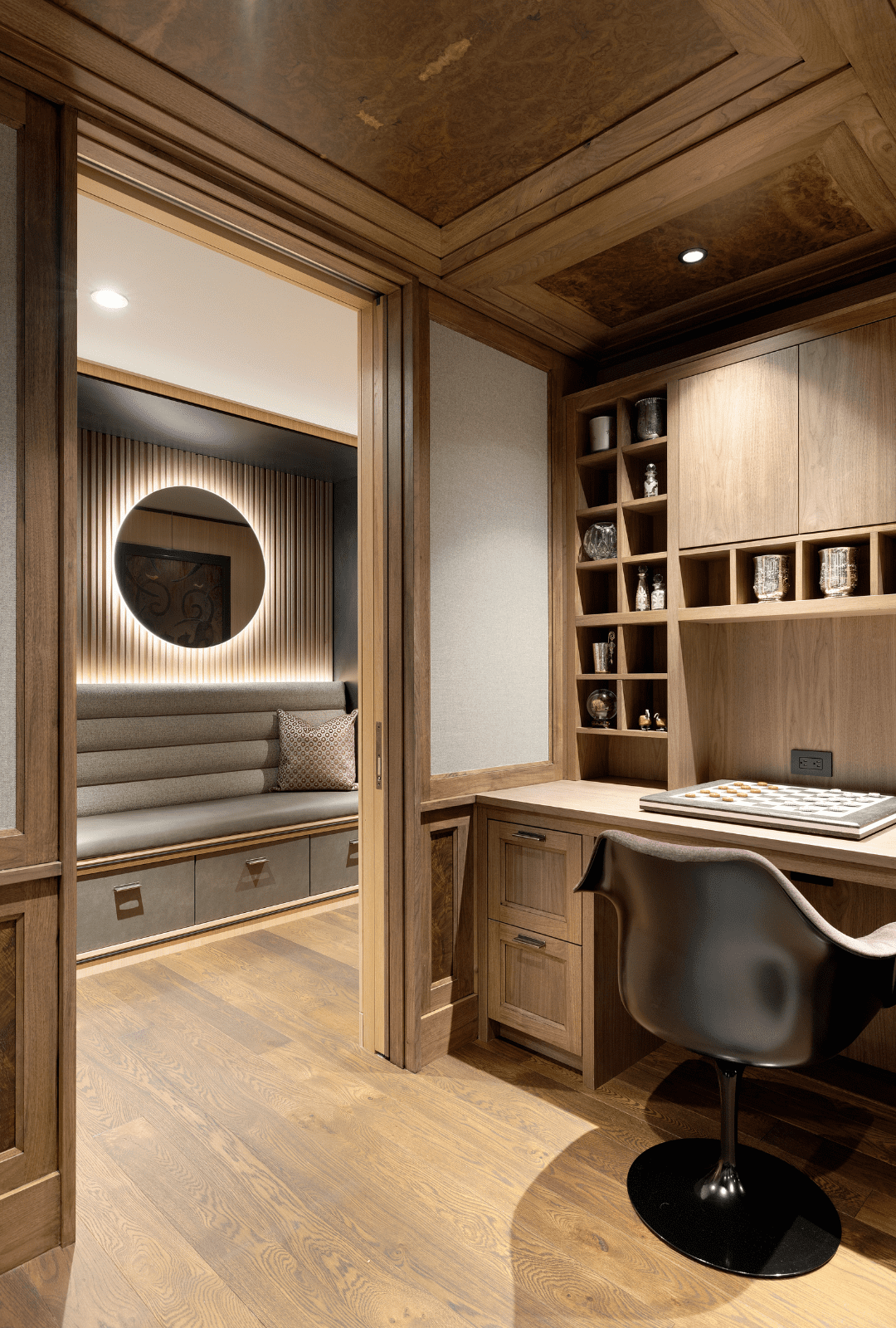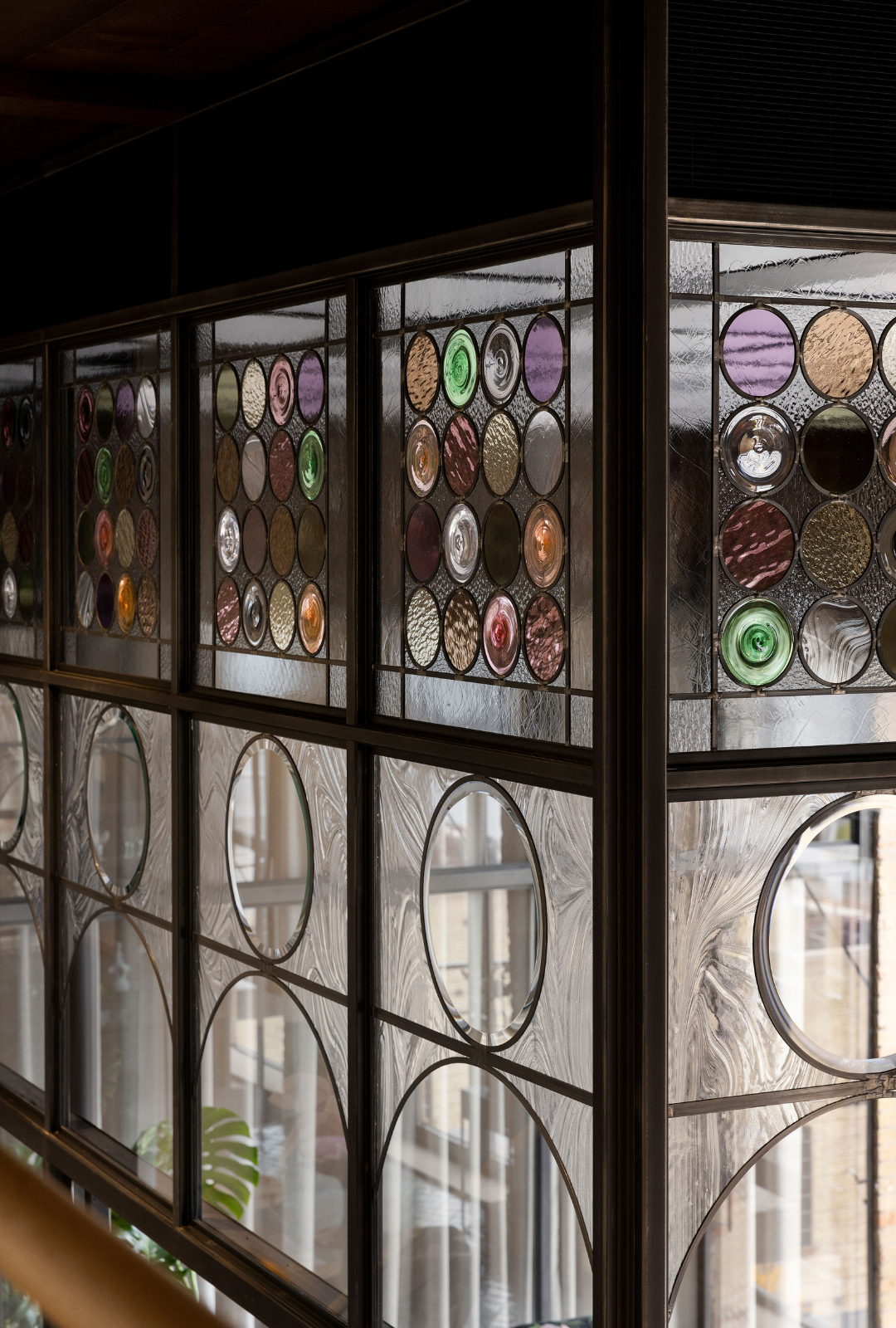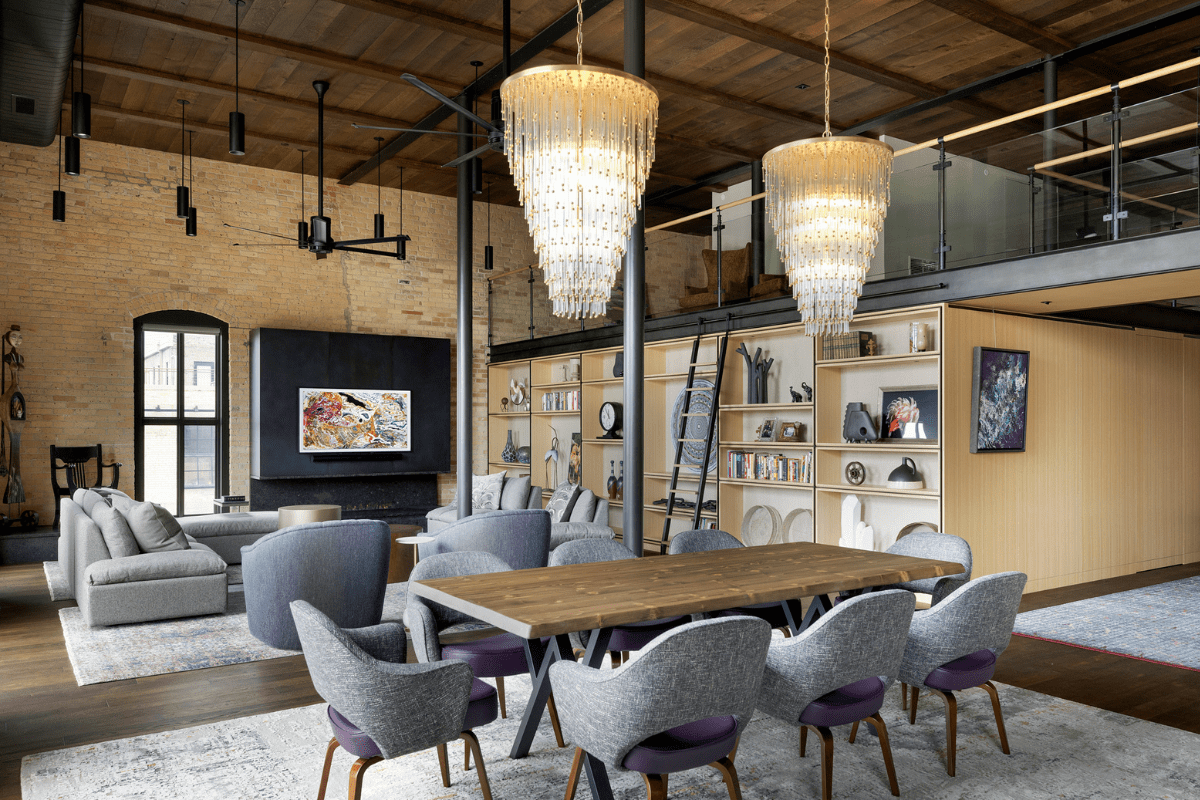When it comes to real estate and flour milling, location is everything. Which is why, when a couple was looking for a brand-new condo in downtown Minneapolis, they set their sights on the Whitney Landmark Residences overlooking the Mississippi River in the Mill District. Originally built in 1879 by a team of top engineers, draftsmen and millwrights, the seven-story brick building set a new bar for industry design. Known as the Standard Mill, the innovative, light-filled structure reflected Minneapolis’s position as the epicenter of the global milling industry for several decades.
In 1987, the property was transformed into the luxurious Whitney Hotel — favored by celebrities like Elton John and Clint Eastwood — then eventually converted into condos in 2007. But of the 27 original units, only two raw adjacent shells on the seventh floor were available. Peppered with structural columns, mechanical and plumbing stacks, and other industrial remnants, the gritty 5,000-square-foot space was a far cry from a move-in-ready condo. And the client had recently remodeled a condo in Sarasota, Florida, so she’d sworn off renovation.
“I said I was never going to do that again,” she says with a laugh. “But as soon as I saw the brick walls and the views of the river, St. Anthony Falls and the Stone Arch Bridge, I knew this was going to be my next project.”
An artist, the client has loved design and construction since childhood, when she helped her carpenter father draw up house plans. Based on her recent experience in Florida, she knew the renovation would require the gold standard of builders, architects, designers and artisans. Enter Streeter Custom Builder, whose team came in to examine the loft and identify the possibilities.
“Streeter is uniquely positioned to evaluate project potentials because of our vast experience crafting utopian environments for our clients,” says CEO/COO Bill Costello. “Senior Project Manager Ian Alderman and I were charmed by the historic elements, and we knew the design had to preserve those while also resolving the structural challenges. We introduced the clients to PKA Architecture founding principal and designer Gabriel Keller and architect Brent Nelson as well as Martin Patrick 3 cofounder and interior designer Greg Walsh, because we knew they would take them on an extraordinary journey. There’s nothing formulaic about their designs; each project feels fresh.”
Upon observing the 18-foot wood joist ceilings hewn from old-growth timber, the handmade bricks, the original glass windows, and the handcrafted metal hooks and pulleys, the design team was inspired to honor the legacy of the original West Side Milling District, a tight-knit community of metal, machine and woodworking shops that supported the area’s many mills.
“Materiality is always a key element of our designs, and with a historic renovation, it’s where the story begins,” says Nelson. “We were excited to work with Hurley Custom Cabinets, Islero Fabrication, Hennepin Made and GlassArt Design, because we knew these artisans would elevate the design and make the loft truly special.”
Just as the Mississippi River powered the mills, the client’s appreciation for artistry served as an incredible catalyst. She wanted the views to take center stage, so the designers oriented the entry on a window to create a dramatic sense of arrival. She also requested a balance of inviting public and intimate private spaces, so they divided the expansive residence with a gutsy steel mezzanine suspended from the structural columns. They created an open kitchen and dining/living area while tucking the guest bedrooms and an office/den beneath the mezzanine, which does double duty as both an art gallery and studio.
The clients have wonderful memories of living with their two young sons in England, Ireland and the Netherlands, so the team masterfully wove those experiences into the plan. When she requested a quiet, verdant space to grow plants, the designers looked across the pond to London, where Sir Joseph Paxton’s Crystal Palace dazzled the world in 1851. Inspired by that innovation, the team conceived of a breathtaking solarium that brings nature into the top-floor loft. Crafted of steel and glass with a rhythmic pattern that nods to the Stone Arch Bridge, the space neatly frames the river and captures a remarkable spirit of place.
“As a team, we’re deeply rooted in Minneapolis, so we’re proud to have been entrusted with the transformation of this landmark space,” Walsh says. “We’re thrilled that the loft has been honored with design and architecture awards, but that was never our intent. For us, it was about working with our client to create a one-of-a-kind home that reflects her reverence for history and love of craft.”







